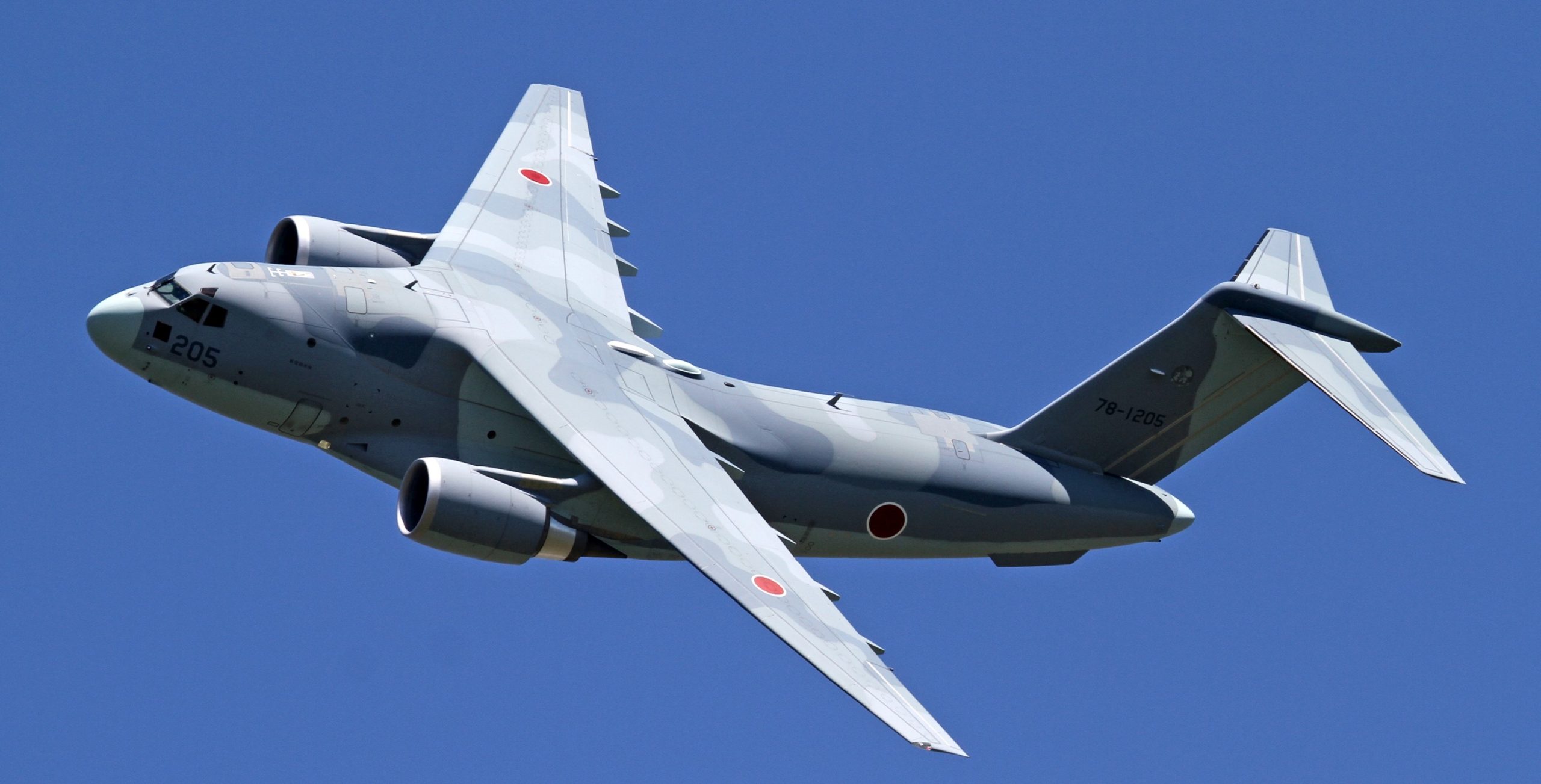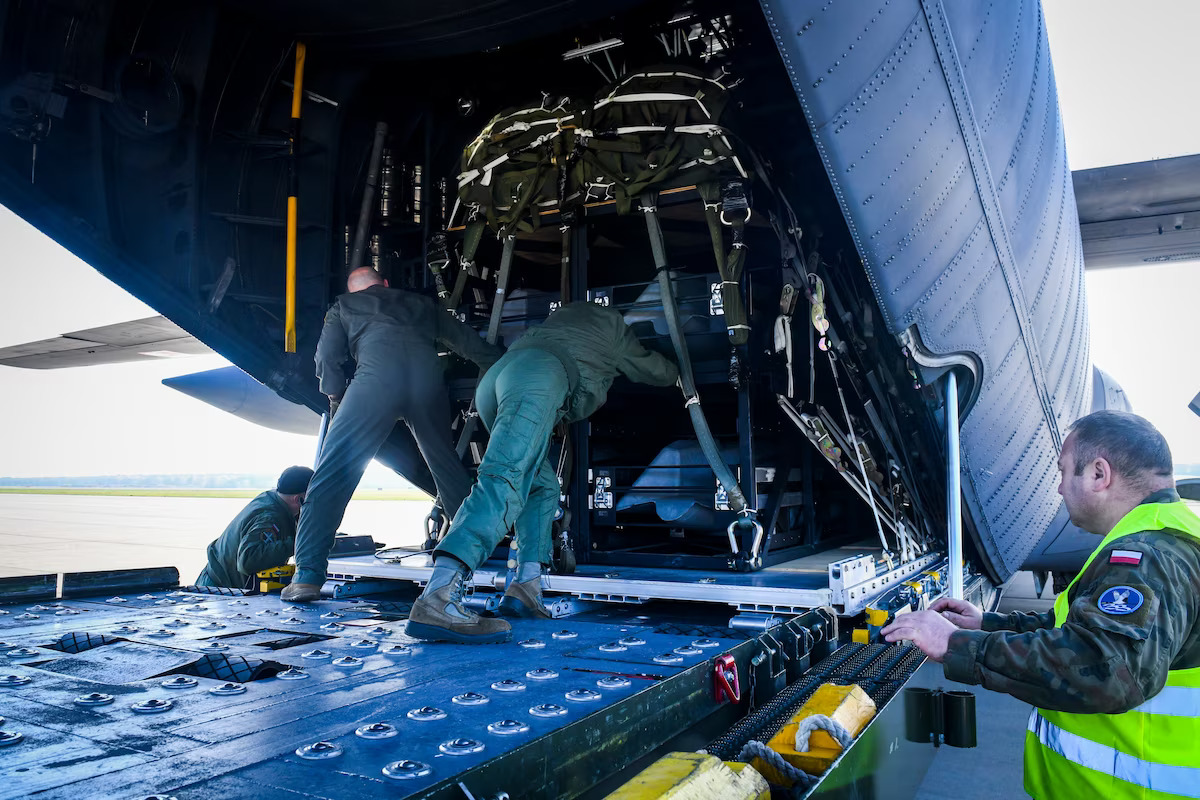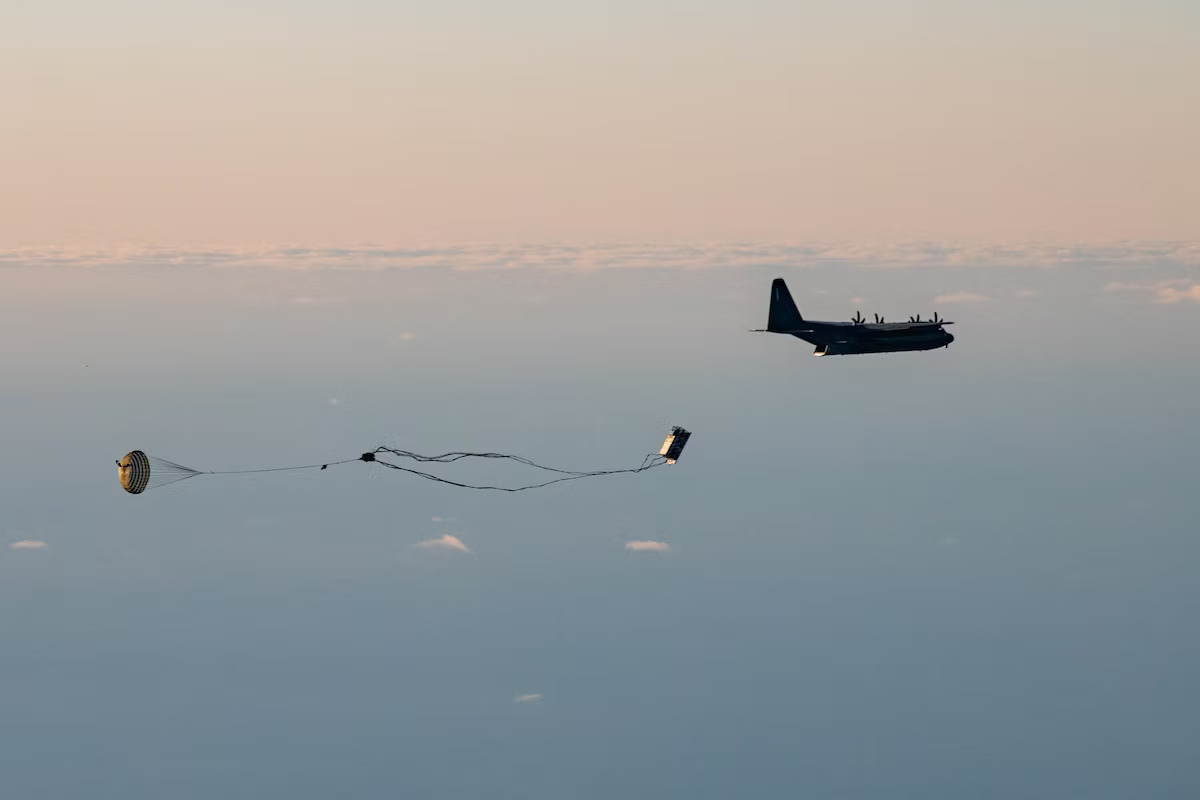The Japanese Ministry of Defense is considering mounting long-range missiles on military transport aircraft as part of its ‘counter-strike capability’ to quickly and pre-emptively respond to missile threats from China and North Korea.
MUST READ: First-Ever India-China Space Collaboration Hits Roadblock; India’s Equipment For Tiangong Space Station Stuck
It is similar to the American Rapid Dragon program that has tested the AGM-138 Joint Air-to-Surface Standoff Missile (JASSM) being loaded and then dropped from C-130 transport aircraft in ‘pellets.’
Reports say Japan’s plan involves its Type 12 anti-ship missiles (ASM) and JASSM being released from its Kawasaki C-2 aircraft.
The plan, however, has been announced as an experimental program where 3.5 billion Yen (US$25 million) has been allotted for technical research, expected to conclude in 2024, following which full-scale production will begin.
According to the Japan Times, the project is consistent with the government’s new Defense Buildup Program, released last year, which called for “further diversifying launch platforms” and planned to study a missile system that can be mounted on transport aircraft.
The ministry also plans to develop missiles to be launched from the Japan Maritime Self-Defense Force (JMSDF) submarines.
The JASSM has a range of 370 km, while the JASSM-Extended Range (ER) can strike a target around 900 km (559 miles) away. The Type 12 longer-range version under development has a range of around 1,000 km (621 miles).
The missiles can be configured for launch from the Kawasaki C-2 aircraft, 15 of which are in service with the Japanese military, with little to no modification. Like the USAF’s Rapid Dragon system, the missile’s engine would self-ignite after being dropped from the cargo aircraft. The C-2 can carry a payload of 20 tons.
The US Air Force demonstrated the launch of a swarm of air-launched missiles with the Rapid Dragon Palletized Effects System last year, a cheap and easy solution to overcome logistical and technological challenges posed by the People’s Liberation Army – Navy (PLAN) and the People’s Liberation Army – Air Force (PLAAF).
Long Way To Go
Japan’s program is still far from operationally ready, primarily because it has only 15 C-2s of a planned fleet of 22. A second prototype has been converted into an Electronic Intelligence (ELINT) aircraft, dubbed the RC-2.
Thus, employing even two units for its version of the Rapid Dragon will entail having fewer aircraft available for logistical transport roles.
Any fresh manufacturing of the C-2 will also be very costly since Japan spent nearly US$2.3 billion on its development, and each unit costs about US$176 million as of 2017.
It wouldn’t be far-fetched to say that the lack of export orders — possibly owing to the high cost — also prevented economies of scale, which could have brought down the price.

Second, the missiles launched from the C-2 are also not immediately available. The Type 12’s new variant is under development and won’t be available until 2028.
Air-launched missiles like the Norwegian Joint Strike Missile (JSM), the JASSM-ER, and the AGM-158C Long-Range Anti-Ship Missile (LRASM) were ordered only in August 2022. These are part of the 2019 Medium Term Defense Program (MTDP).
US To Address Issues With Rapid Dragon Too
The US faces the same risk, although it has a far higher number of C-130s and C-17 Globemaster IIIs, and would not conceivably fire missiles at Chinese targets only from the Rapid Dragon program using transport planes.
It will use Rapid Dragon transports and other strategic bombers like the B-1B Lancer, B-52 Stratofortress, and possibly even B-2 Spirit stealth bombers.
Photos from a November 2022 test show a ‘four-pack’ pellet being loaded onto a Polish Air Force C-130J. Two such pellets put eight JASSM missiles in an MC-130/C-130J.
While the pellet payload of a C-17 is unknown, given its larger size, it would be safe to assume it can carry two ‘six pack’ pellets (12 missiles). A B-52 can carry 20 cruise missiles, and a B-1 can take 24. Thus, forming one B-1B Lancer and two MC-130s can collectively send 40 missiles screeching toward Chinese land and naval targets.
China Worried, But Preparing
China, which is closely watching the Rapid Dragon’s evolution and has assessed it as a significant threat and a highly potent option, will possibly introduce countermeasures when it becomes operational. While shooting down several dozen low-observable missiles in flight would be immensely challenging, the People’s Liberation Army Air Force and Navy (PLAAF, PLAN) would aim to shoot down the bombers themselves before they reach the drop zones.

From the American perspective, the Rapid Dragon poses the Chinese another targeting dilemma. They would be split between addressing the threat posed by the Rapid Dragon transport bombers, the missiles they would fire, and the several dozen allied naval and aerial targets. AMC Commander Gen. Mike Minihan touched upon this when he spoke to Aerospace DAILY following the July 24 test of the Rapid Dragon during the Mobility Guardian 2023 exercise.
“Now the adversary has an infinitely bigger problem to worry about. (They) don’t need to worry just about the bombers, (they) have to worry about this C-130 and every other C-130 on the planet,” Minihan says. “C-130s can do it. All of our partners and allies fly them, so you can give the adversary infinite dilemmas they need to worry about,” Minihan added.
How Does The Rapid Dragon Works?
Aircraft like the C-130J Hercules/MC-130 Commando II release dozens of missiles packed in large ‘pellets’ from their main doors mid-air like they usually do with other airdrops. The drogue parachute arrests the pellets carrying missiles, turning vertical while an electronic control box on each pellet releases the missiles one after the other.
The box also feeds the targeting information into the missile’s navigation system. Still, it can be assumed that the missile might be pre-programmed with the target coordinates before release. An illustrative video by Lockheed Martin shows how the pellets can be ‘rolled-on’ and ‘rolled-off’ like any other cargo.
The US’s Air Force Research Laboratory (AFRL) has tested the Rapid Dragon five times. A July 2021 test passed targeting data to military cargo planes, which was used to program munitions on those planes, further hitting targets. In November of that year, an AFSOC crew on an MC-130J received targeting data while in flight, passing it to a palletized simulation cruise missile, which was dropped from the plane and released.

A December 2021 test used a live cruise missile, where target data in the Gulf of Mexico was passed to an MC-130J and loaded onto the palletized missile. The missile deployed and “successfully destroyed its target,” the Air Force Research Lab (AFRL) said. November 9, 2022, saw another successful live-fire of the AGM-158 JASSM-Extended Range (ER) from an MC-130J on a range over the Norwegian Sea under the US European Command.
During the July 24 test during the Mobility Guardian exercise, the Air Mobility Command conducted a “successful test…of a palletized effect…in coordination with the Indo-Pacific Command (INDOPACOM).” The exact location of the test was, however, not revealed.
- The author can be reached at satamp@gmail.com
- Follow EurAsian Times on Google News




